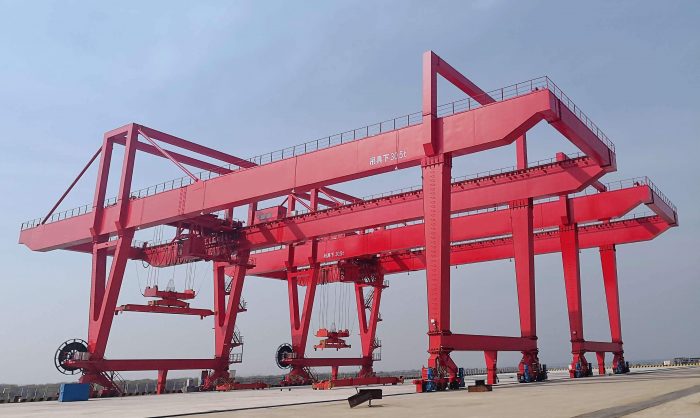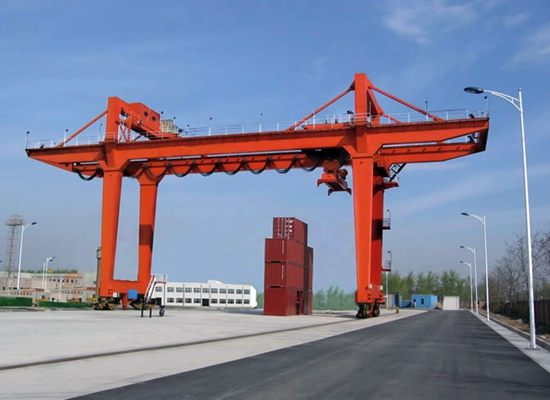Rail mounted gantry cranes are typically used for the purpose of stacking containers. And they are widely available from manufactures in a series of different heights and widths. In some cases, manufacturers can even specially customise the original design to facilitate customers and their businesses. Our article features some information on when to use the rail mounted gantry crane.

These machines were designed to support a max of up to 20 containers(20 contenedores) if they were lined up lengthways. And they make it very possible for up to 6 containers to be stacked one on top of the other. However, the overall power experienced by the motor that is used for hoisting usually depends on the initial speed at which hoisting is taking place. Typically, these are usually in the range of either 250 kilowatts to 335 kilowatts.
Additionally, the winch that travels typically moves by the driving force exerted by 4 motors. However, each motor attached typically supplies 25 kilowatts. In order for the crane to actually move, there are a set of wheels which are attached and they typically have either 12 or 8 drive motors. And the motors that power the crane are typically 30 kilowatts each.
In some cases, cranes are even crafted to be anti-sway which goes on to further increase the reliability and production of the company. Some rail mounted cranes(gruas sobre rieles) can even easily stack up to 8 containers and their span could be customised all the way in an excess of 70 metres. When the cranes are built, they are done so with modern technology that allows them to be either automatic in terms of their operations or manual in some cases and of course semi-automatic as well. Some manufacturers even offer an eight-rope reeving system, this goes on to further increase the capabilities of the anti-sway system.
And the eight rope even gives further stability to various motions and drives of the crane. This is simply done to increase the productivity when compared to various models of the same design. The following are the main features of the rail mounted gantry crane:
*Specialised reeving system that combats a huge issue such as swaying when moving.
*Being made with a specialised simultaneous drive motion.
*Power can now be regenerated.
*Due to the automated operations, crane structures are now being built much more robust.
*Travel systems are now direct.
*Specialised anti crabbing technology is now being implemented.
The following are the benefits and advantages(beneficios y ventajas) of using rail mounted gantry cranes:
*Performance is increased due to the anti-sway functions.
*There is no headblock which increases the visibility.
*The overall tare weight is reduced due to no headblock on the system.
*Productivity is increased because of the design.
*Spare parts are now easier to source and the overall crane system now requires much less maintenance than before.
*Gantry operations are now smoother.
*Due to its design, there is also less power being consumed by the gantry crane.

As we conclude, we have just looked at the rail mounted gantry crane. And we have also looked at the various features and advantages that come with it. When it comes to employing this particular crane in an industry, they are suited for dock and port work(trabajo portuario) along with various industries that require heavy container storage regularly.
